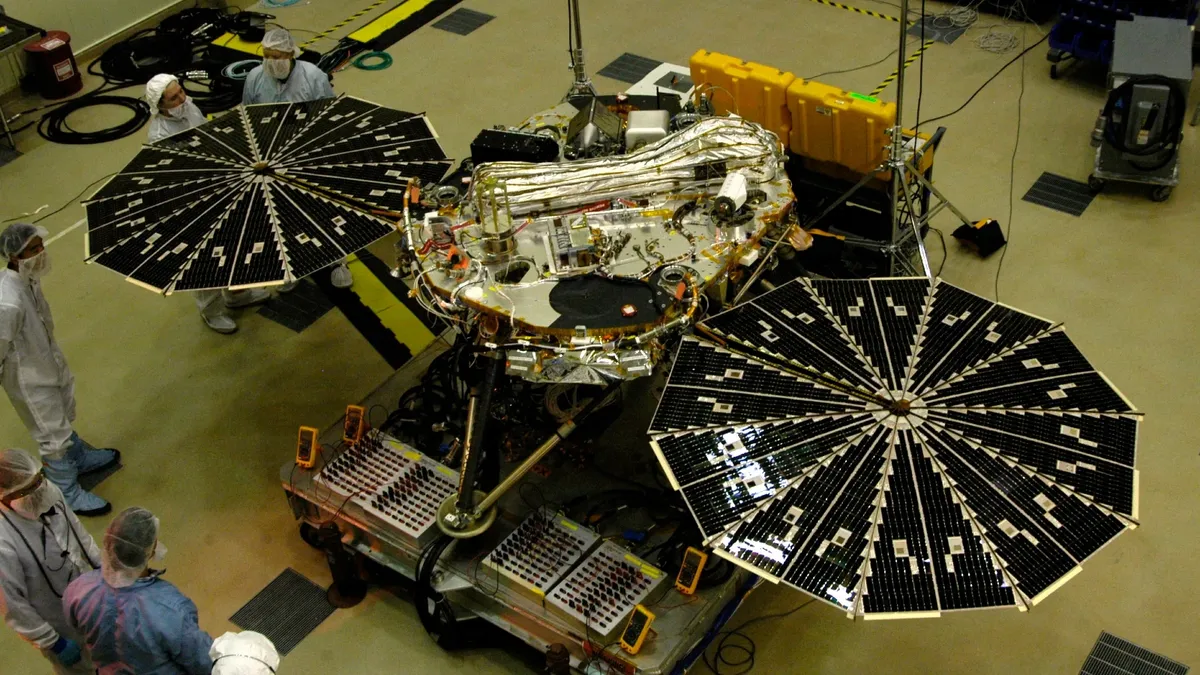
In a groundbreaking study, researchers have uncovered dozens of never-before-seen species of extremophile bacteria that were hiding in a NASA clean room. This facility was used to quarantine the Phoenix Mars lander prior to its successful launch to the Red Planet over 17 years ago. The study reveals that some of these hardy microbes may even possess the capability to survive the vacuum of space, although there is no evidence of contamination to the spacecraft or Mars itself.
NASA's Phoenix Mars lander made its historic touchdown on May 25, 2008, where it operated for 161 days (or 156 Martian days) gathering a plethora of data until it unexpectedly went offline. Prior to its arrival on Mars, the lander spent several crucial days in a clean room located at the Payload Hazardous Servicing Facility at Kennedy Space Center in Florida. It was launched from the nearby Cape Canaveral Space Force Station (formerly Cape Canaveral Air Force Station) on August 4, 2007, as reported by Live Science's sister site Space.com.
NASA's clean rooms serve a vital role in the space exploration process. These meticulously controlled environments are designed to prevent environmental contamination by microbes and to keep spacecraft free from potentially damaging particles. Clean rooms are sterilized, pressurized, and continuously vacuumed, with air supplied through specialized filters that eliminate 99.97% of airborne particles. To ensure maximum cleanliness, anyone entering the room must don an all-in-one bunny suit and undergo an air shower before entry.
Despite these rigorous precautions, the study revealed that researchers found DNA from 26 novel species of bacteria in samples collected from the Phoenix lander clean room. The findings were published on May 12 in the journal Microbiome. Most of these newly identified microbes exhibited characteristics that grant them resistance to extreme environmental conditions, such as extreme temperatures, high pressures, and elevated levels of radiation.
Some of the discovered extremophiles possess genes linked to DNA repair, detoxification of harmful substances, and enhanced metabolism. The researchers suggest these bacteria may even have the potential to endure the harsh conditions of space travel. According to study co-author Alexandre Rosado, a microbiologist at the King Abdullah University of Science and Technology in Saudi Arabia, this research is crucial for understanding the risks posed by extremophiles during space missions. It aims to identify which microorganisms might survive the challenging conditions of space.
The newly described species accounted for nearly a quarter of all the species identified in the clean room, most of which also exhibited extremophile properties. This finding implies that spacecraft clean rooms could be promising locations for discovering additional resilient microbes. Identifying new extremophiles is essential, as it could help scientists predict the characteristics of potential extraterrestrial microbes and develop strategies to prevent their contamination of Earth.
Interestingly, some of these extremophiles produce substances like biofilms, which offer significant potential in various fields, including medicine, food preservation, and biotechnology. The ongoing exploration of these hardy microbes not only enhances our understanding of life in extreme environments but also holds promise for innovative applications here on Earth.